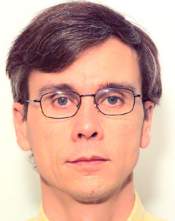Keynote Speakers:
|
Dr. Scott Knight is an Associate Professor in the Department of Electrical and Computer Engineering at the Royal Military College of Canada. Dr. Knight was appointed to the academic faculty at RMC in 2000 on retirement from 21 years of service in the Canadian Air Force. Although an Air Force pilot early in his career his later experience was focused on computer systems and network engineering. During this time Dr. Knight worked with the National Defence Intelligence and Security communities on the development of secure computing networks to be used for handling classified and national security related information. He also spent time as a military faculty member at RMC where he founded the Computer Security Laboratory, and he continues to lead this research group in his present appointment. This research group has a close working relationship with the Canadian Forces Information Operations Group and the Communications Security Establishment, and focuses on computer network defence and support to information operations. |
Title: Computer Network Defence: You Can Observe A Lot By Just By Watching Abstract: The Computer Security laboratory (CSL) is a research group within the Electrical and Computer Engineering Department at RMC. Research within the CSL is focused on information security issues relating to the security of information held on or transported by computers and computer networks. Recent research has addressed issues concerning the exploitation of computer networks by attackers using covert communications channels for command and control of the target machines they have compromised. The research has also focused on the appropriate technical response to computer network attack and the defensibility of computer networks. The talk will address these issues in the context of a computer network cyber-defence exercise the CSL participated in recently. The cyber-defence exercise to be described is an annual exercise sponsored by a US government agency. Participants include students from the United States Military academies and postgraduate schools, and RMC. The exercise took place over a one week (5day) time frame were the participating schools were required to defend networks they had built from cyber-attack by a government attack team. The conduct of the exercise and the experiences of the RMC CSL team will be used in the talk to describe and highlight the ongoing research activities of the CSL research group. |
|
Dr. David Skillicorn is a Professor in the School of Computing at Queen's University, where he heads the Smart Information Management Laboratory. He is also an Adjunct Professor at the Royal Military College of Canada. His research interests are in data mining, particularly for counterterrorism and fraud; he has also worked extensively in parallel and distributed computing. He has authored more than a hundred papers, and several books. His Ph.D. is from the University of Manitoba, and his undergraduate degree from the University of Sydney. |
Title: Computational Interestingness Abstract: As humans we have considerable mental hardware devoted to detecting what's interesting in our environment, and using it to drive our attention. We find this so easy that it's hard to see how difficult a problem detecting what's interesting really is. Even a workable definition of interestingness is not straightforward. |
|
Dr. Roel Vertegaal is Associate Professor in Human-Computer Interaction (HCI) at Queen’s University in Kingston, Ontario, and director of the Human Media Laboratory. He is also CTO of Xuuk, Inc., a startup that develops attention sensors for interactive, real-world viewing statistics gathering. Roel's first degree is in Electronic Music from Utrecht Conservatory in the Netherlands. He did an MSc in Computing in Britain, studied design in The Hague, and holds a PhD in HCI from Twente University. Roel is one of the world's experts on eye communication between humans, and between humans and technology. He received the Premier of Ontario's Research Excellence Award for his work on Attentive User Interfaces (AUI) [Google TechTalk], which was featured in media across the globe, from Good Morning America to Scientific American. Roel helped create the first North-American conference on Eye Tracking (ACM ETRA), established alt.chi as the alternative papers venue at the annual ACM SIGCHI conference and advised the National Academy of Sciences. His current interest is in Organic User Interfaces. |
Title: The (Re)Usability of Everyday Computational Things: Why Industrial Design will be the New Interaction Design Abstract: We are at the dawn of a new age: display materials with unprecedented capabilities in terms of three-dimensional form. Flexible Organic Light Emitting Diodes (FOLEDs) and Flexible Electrophoretic Ink (E Ink) present a third revolution in display technologies that will greatly alter the way computer interfaces are designed. Instead of being constrained to the flat (or rather, somewhat rounded) surfaces of the Cathode Ray Tube (CRT), or the really flat surfaces of the Liquid Crystal Display (LCD) Dynabooks and tablet PCs, we will have the ability to shrink-wrap displays around any three-dimensional object, and thus, potentially, every everyday thing. One consequence of these organically shaped displays is a world in which technology and interactive displays are becoming a commodity for industrial designers: computational materials, not unlike plastics or wood. When user interface technologies become so integrated into everyday products that their interface truly disappears, the art of interface design will become truly ubiquitous. |


 Facebook
Facebook 

